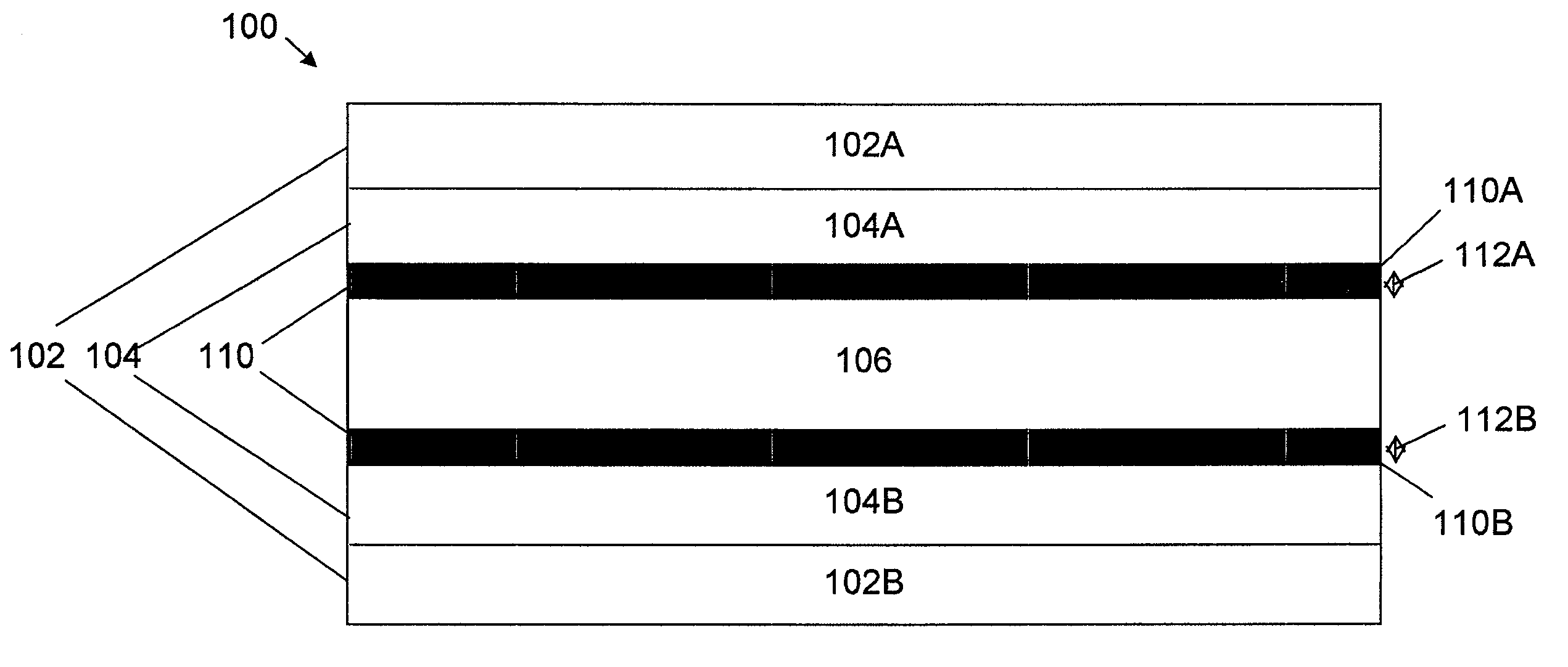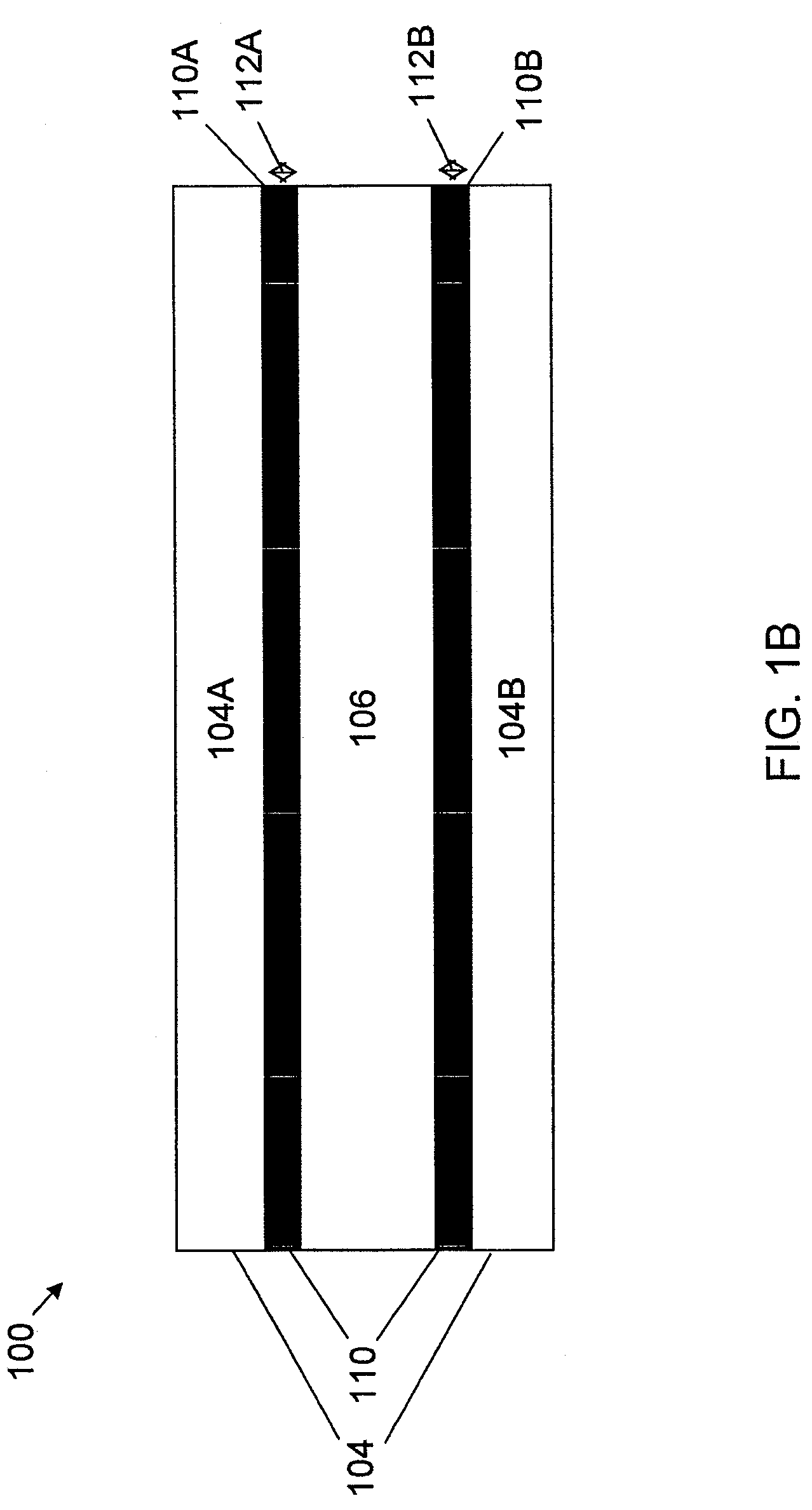Systems and methods for improving the performance of a photorefractive device
a technology of photorefractive devices and performance improvement, applied in the field of systems and methods for improving the performance of photorefractive devices, can solve the problems of long-term grating persistency and the disappearance of photorefractive grating almost immediately, and achieve the effect of prolonging the grating persistency of the photorefractive device comprising a polymer layer and holding it for a long tim
- Summary
- Abstract
- Description
- Claims
- Application Information
AI Technical Summary
Benefits of technology
Problems solved by technology
Method used
Image
Examples
production example 1
Preparation of Copolymer by AIBN Radical Initiated Polymerization (TPD Acrylate / Chromophore Type 10:1)
[0116]The charge transport monomer N-[(meth)acroyloxypropylphenyl]-N,N′, N′-triphenyl-(1,1′-biphenyl)-4,4′-diamine (TPD acrylate) (about 43.34 g), and the non-linear-optical precursor monomer 5-[N-ethyl-N-4-formylphenyl]amino-pentyl acrylate (about 4.35 g), prepared as described above, were put into a three-necked flask. After toluene (about 400 mL) was added and purged by argon gas for about 1 hour, azoisobutylnitrile (about 118 mg) was added into this solution. Then, the solution was heated to about 65° C., while continuing to purge with argon gas.
[0117]After about 18 hrs polymerization, the polymer solution was diluted with toluene. The polymer was precipitated from the solution and added to methanol, then, the resulting polymer precipitate was collected and washed in diethyl ether and methanol. The white polymer powder was collected and dried. The yield of polymer was about 66%....
example 1
Preparation of Photorefractive Devices
[0121]A photorefractive composition testing sample was prepared comprising two ITO-coated glass electrodes, two polymer layers, and a photorefractive layer. The components of the photorefractive composition were approximately as follows:
[0122]
(i) Matrix polymer (described in Production Example 1):50.0 wt %(ii) Prepared chromophore of 7FDCST30.0 wt %(iii) Ethyl carbazole plasticizer20.0 wt %
[0123]To prepare the photorefractive composition, the components listed above were dissolved with toluene and stirred overnight at room temperature. After removing the solvent by rotary evaporator and vacuum pump, the residue was scratched and gathered.
[0124]This powdery residue mixture, which is used to form the photorefractive layer, was put on a slide glass and melted at about 125° C. to make an approximately 200-300 μm thickness film, or pre-cake. A first electrode layer and a second electrode layer are positioned adjacent opposite sides of the photorefrac...
example 2
[0136]A photorefractive device was obtained in the same manner as in Example 1 except that the polymer layers were made from PMMA (polymethyl methacrylate). The grating persistency is measured by method (a) with applied bias on and reading beam on continuously.
PUM
| Property | Measurement | Unit |
|---|---|---|
| thickness | aaaaa | aaaaa |
| thickness | aaaaa | aaaaa |
| refractive index | aaaaa | aaaaa |
Abstract
Description
Claims
Application Information
 Login to View More
Login to View More - R&D
- Intellectual Property
- Life Sciences
- Materials
- Tech Scout
- Unparalleled Data Quality
- Higher Quality Content
- 60% Fewer Hallucinations
Browse by: Latest US Patents, China's latest patents, Technical Efficacy Thesaurus, Application Domain, Technology Topic, Popular Technical Reports.
© 2025 PatSnap. All rights reserved.Legal|Privacy policy|Modern Slavery Act Transparency Statement|Sitemap|About US| Contact US: help@patsnap.com



